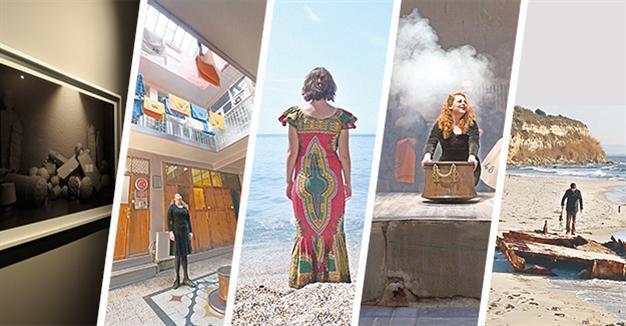Ottomans and Europeans at new exhibition
ISTANBUL
 Organized with the collaboration of the Istanbul Foundation for Culture and Arts (İKSV) and Italy’s Cittadellarte-Pistoletto Foundation, an exhibition titled “Ottomans and Europeans: Pasts and Perspectives” has opened at the Tophane-i Amire Culture and Art Center in Istanbul.
Organized with the collaboration of the Istanbul Foundation for Culture and Arts (İKSV) and Italy’s Cittadellarte-Pistoletto Foundation, an exhibition titled “Ottomans and Europeans: Pasts and Perspectives” has opened at the Tophane-i Amire Culture and Art Center in Istanbul. Curated by Beral Madra and Juan Esteban Sandoval, the exhibition presents the works of Leone Contini, Erol Eskici, Eda Gecikmez, Naci Güneş Güven, Driant Zeneli and Mary Zygouri.
The exhibition presents an expedient ground for expanding and complementing the opinion of the artists about existing cultural and socio-political problems.
Inspired by the Battle of Gallipoli, Contini’s work was conceived on the former battlefield. Eskici’s work discusses demographic and politic upheavals, displacements and handovers, while tackling geopolitics in terms of geology on a symbolic and indirect representation.
Gecikmez developed her project on African refugees whom she met in Genoa. Güven’s computer-generated composition of Ottoman tombstones brings a particular and arbitrary interpretation to collective images of Ottoman grave typology and the culture of death.
Digging like a virtual contemporary archaeologist, Zeneli’s video work “Venezia” was realized in the southern province of Antalya. It evokes a shift of observation on history, focusing on the image and the imagery triggered by a holiday resort that imitates Venice in its architectural design.
Zygouri developed her project on a modest but historical hamam (Turkish bath) founded in 1911 in the Istanbul district of Dolapdere. In her performance enacted in the hamam on Jan. 30, 2015, with the active participation of people of Armenian, Greek and Turkish origin, she interpreted the socio-historical meaning of the place, which according to the three Greek, Armenian and Ottoman inscriptions on its red ochre facade, was called The Bath of Constitution (Meşrutiyet Hamamı) with reference to the Second Constitution Era (Young Turk Revolution), and changed to Freedom Hamam (Hürriyet Hamamı) in 1923.
The video and the installation at the show are the results of that collective experience.
Blind date sessions
During June and July 2015, the exhibition artists came together for an artist residency program named “Blind Date Sessions” in the Cittadellarte-Pistoletto Foundation’s center in Biella, northern Italy, where they had the opportunity to build theoretical collaborations and dialogue with senior participants Gülçin Aksoy, Ergin Çavuşoğlu, Güven İncirlioğlu, Adrian Paci, Michelangelo Pistoletto, and Igiaba Scego.
The works to be featured at the exhibition are the artistic outcomes of these encounters.
The exhibition has been organized as the Turkish leg of the “Ottomans and Europeans: Reflecting on Five Centuries of Cultural Relations” project supported by the European Union’s Culture Program and led by the Center for Fine Arts (BOZAR) Brussels.
Since 2012, the project has proposed a journey through five centuries of shared cultural history between Europe and Turkey to change perceptions of citizens and artists from both sides.
The project partners organized exhibitions, conferences and artist residencies in various locations.
The exhibition can be seen until March 27.
















